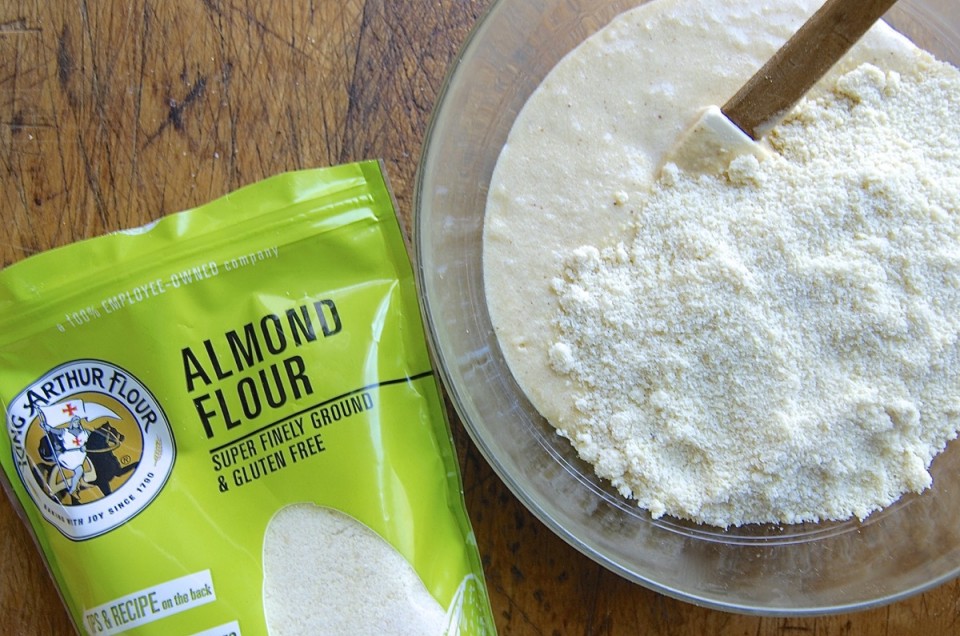


Almond flour: it's one of the newest darlings in foodie world, appearing in everything from Paleo chicken parmesan to classic/retro Wedding Cookies. Chances are, if you're a dedicated baker, you've purchased almond flour — or are considering it. So let's take a look at the various ways baking with almond flour is different than baking with all-purpose flour — and exactly which types of baked treats really shine with almond flour.
Almond flour yields tender treats — learn how and when to use it in your baking.
Like any nut, almonds are high in fat; and fat helps make baked treats moist and tender. This can be a good thing: think pancakes. Or not: think crusty artisan bread, whose texture veers towards chewy rather than tender.
Once you've decided if added tenderness is your goal, here are some rules of the road, gleaned over many hours of test baking:
Note: Feel free to substitute by either weight or volume; the guidelines above work either way. Substituting by weight will add a greater volume of almond flour to your recipe, since almond flour weighs less per cup (3 3/8 ounces) than all-purpose flour (4 1/4 ounces) or whole wheat flour (4 ounces).
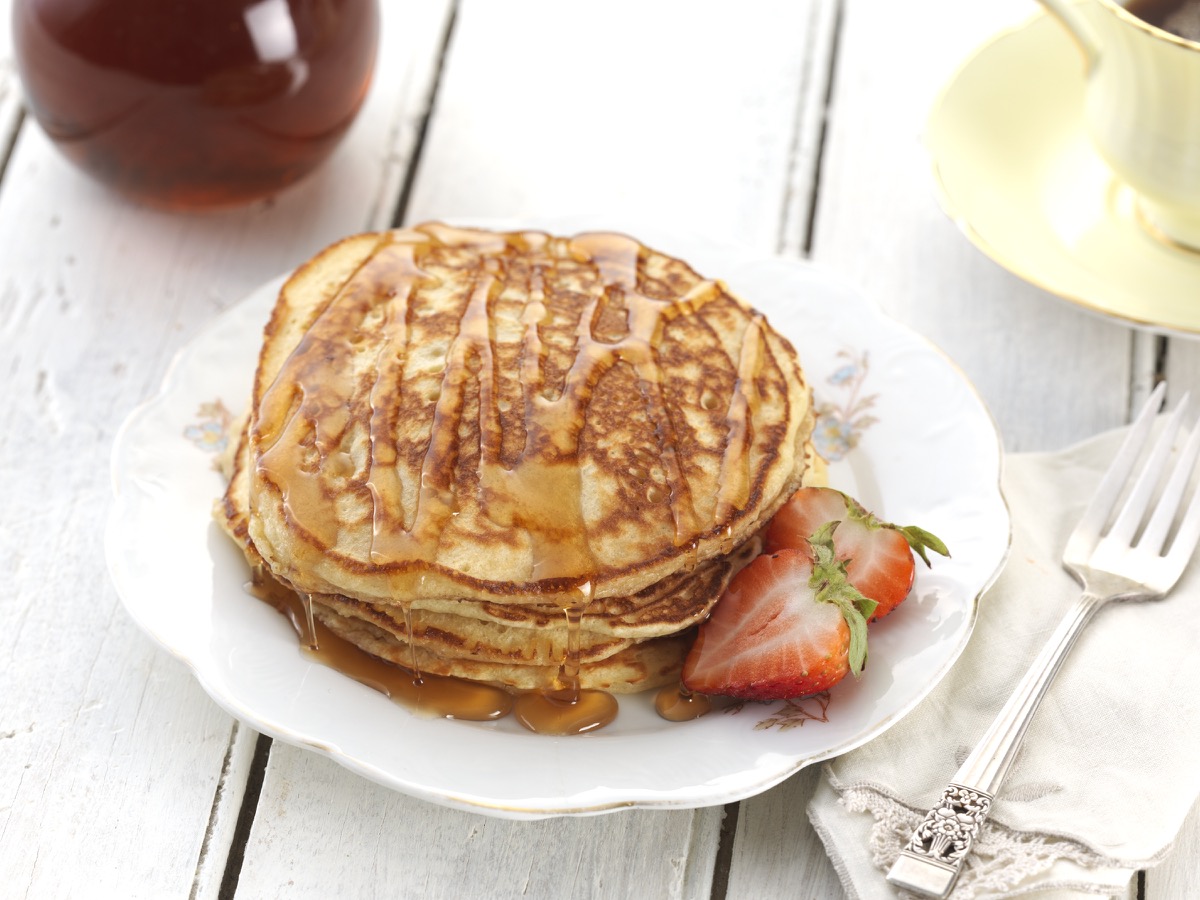
Looking for a "basic is beautiful" pancake recipe? Simply Perfect Pancakes — made from just eggs, milk, butter, flour, baking powder, sugar, and salt — fit the bill.
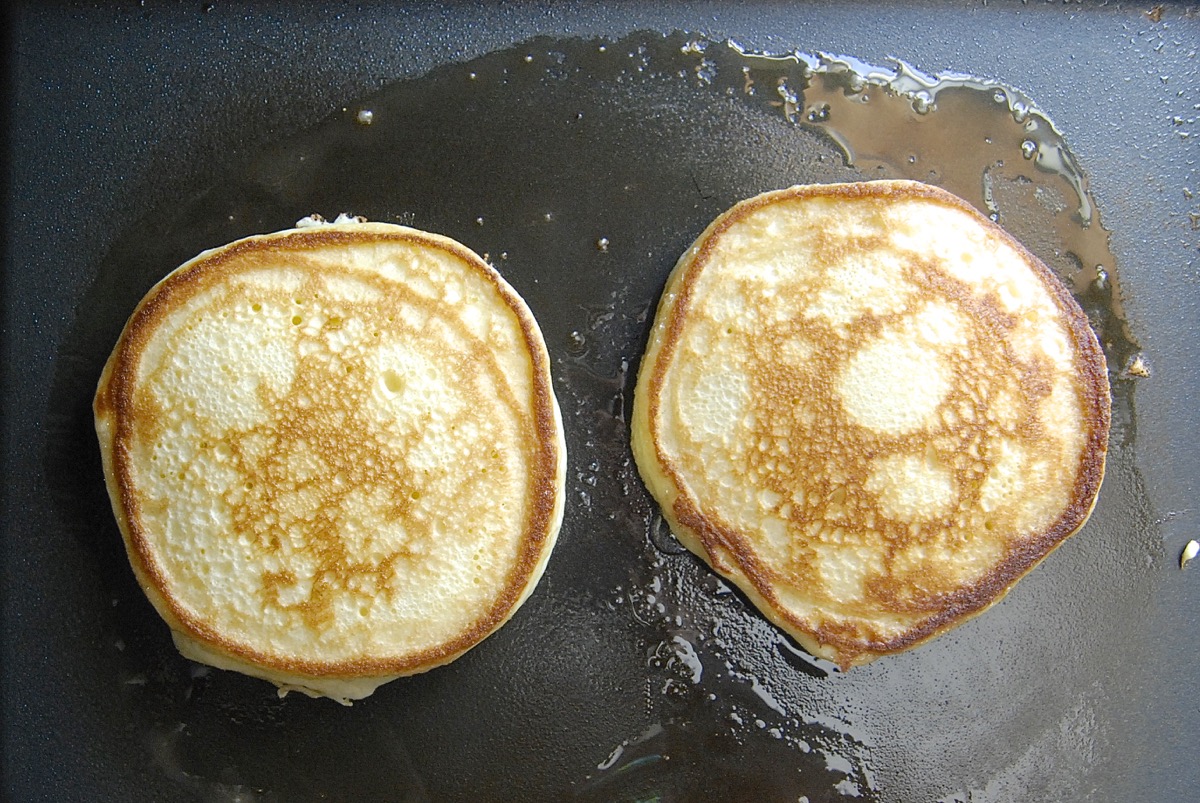
The recipe calls for 1 1/2 cups of King Arthur Unbleached All-Purpose Flour, so I use 3/8 cup (6 tablespoons) almond flour (25% of 1 1/2 cups), and 1 1/8 cups all-purpose.
That's the standard recipe pancake on the left, the almond flour pancake on the right. No difference in spread or browning.
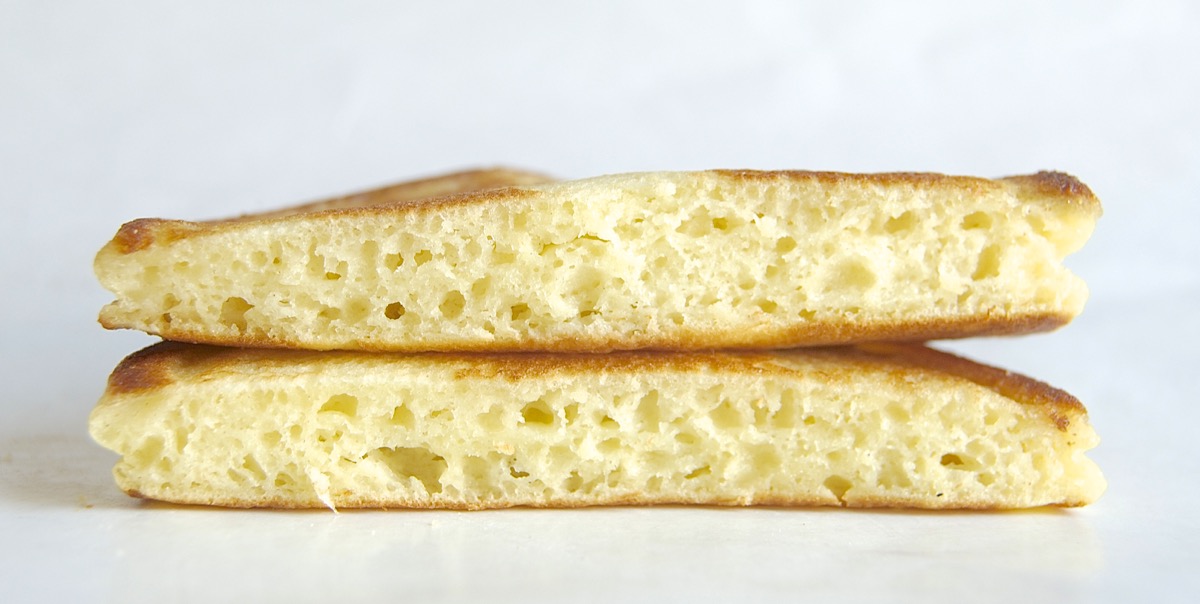
Almond flour pancake on top, standard recipe below. The almond flour pancake rose a tiny bit more.
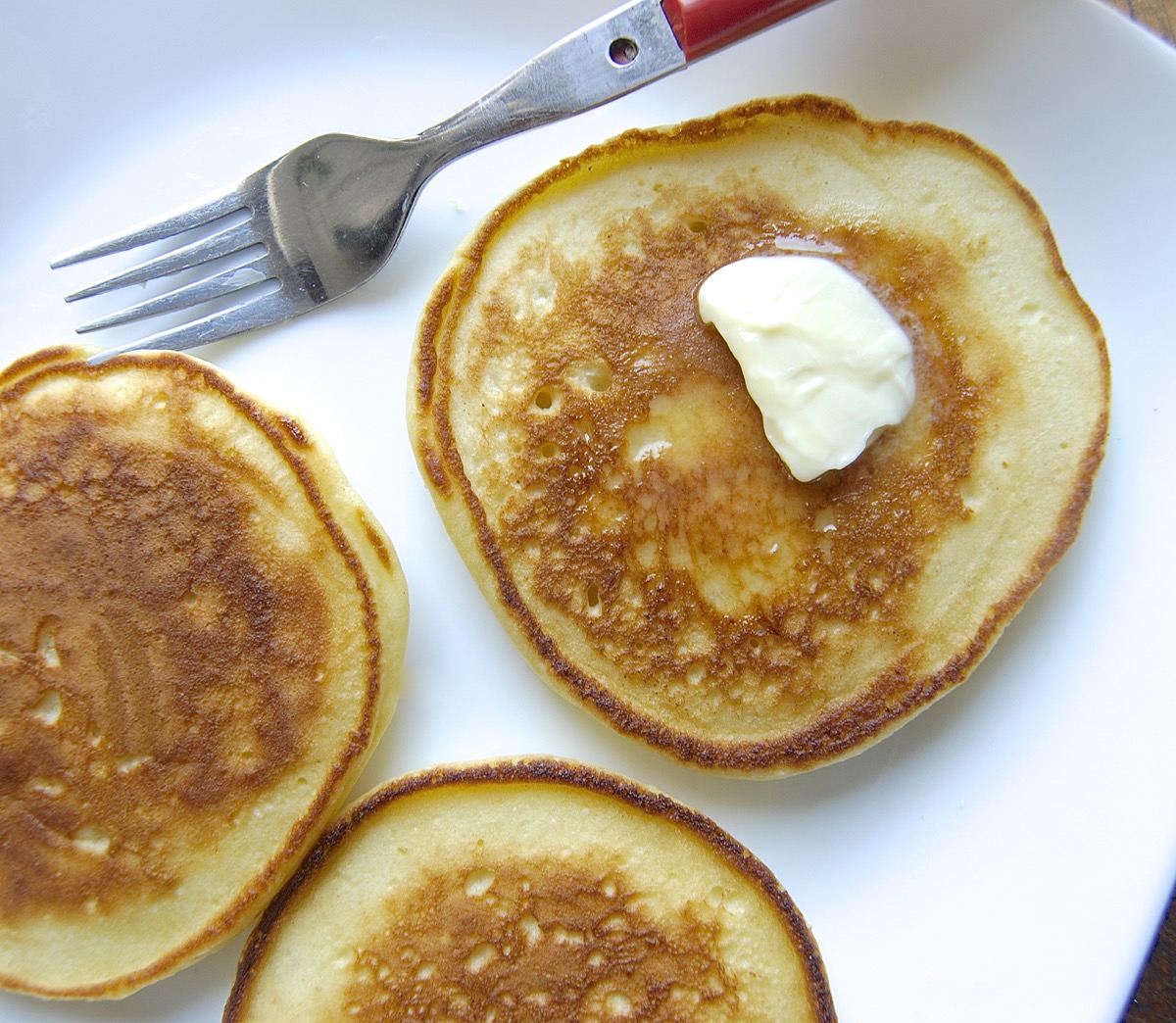
I find the almond flour pancakes slightly richer tasting, and noticeably more tender than the standard pancakes. In fact pancakes, whose chief attributes are moistness and tenderness, are the perfect candidate for almond flour.
Bonus for gluten-free bakers: almond flour is the chief ingredient in our superb gluten-free Almond Flour Pancakes.
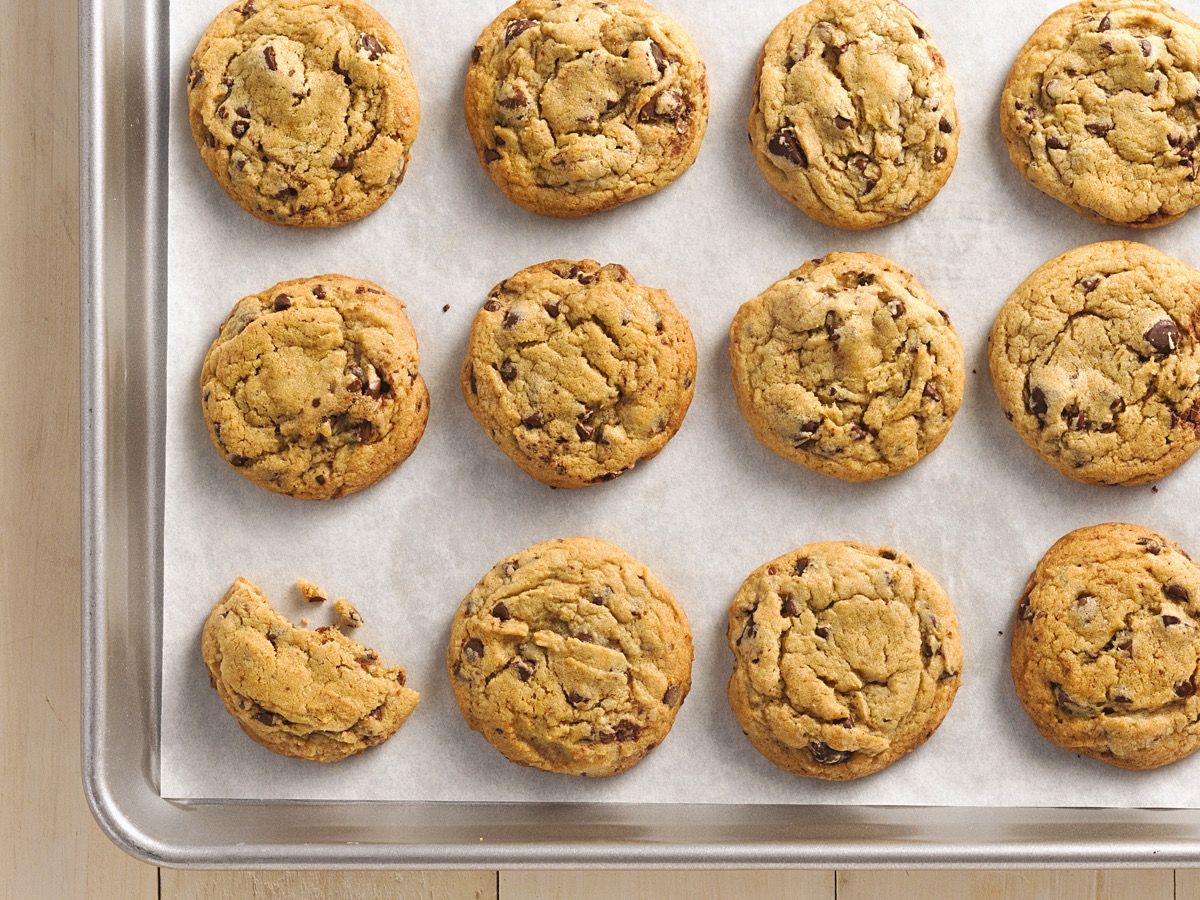
Are chocolate chip cookies the most-baked recipe ever — or does it just feel that way? Everyone bakes this iconic cookie at some point. My favorite recipe (the cookies pictured above) includes both brown and white sugar, plus an over-the-top amount of chips.
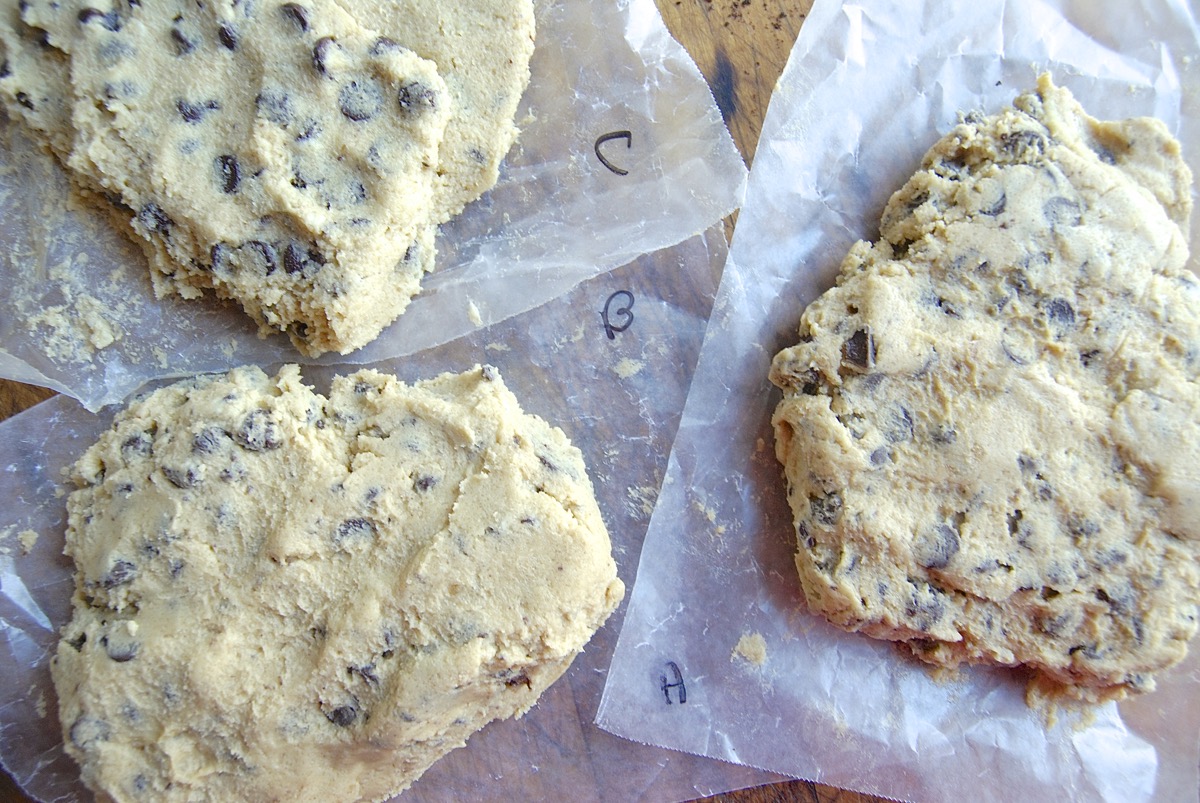
Sue Gray, my King Arthur Flour test kitchen buddy for the past 20+ years, is one of the savviest baking scientists I know. She recently said she'd like to experiment with 100% almond flour chocolate chip cookies.
Sue, this one's for you.
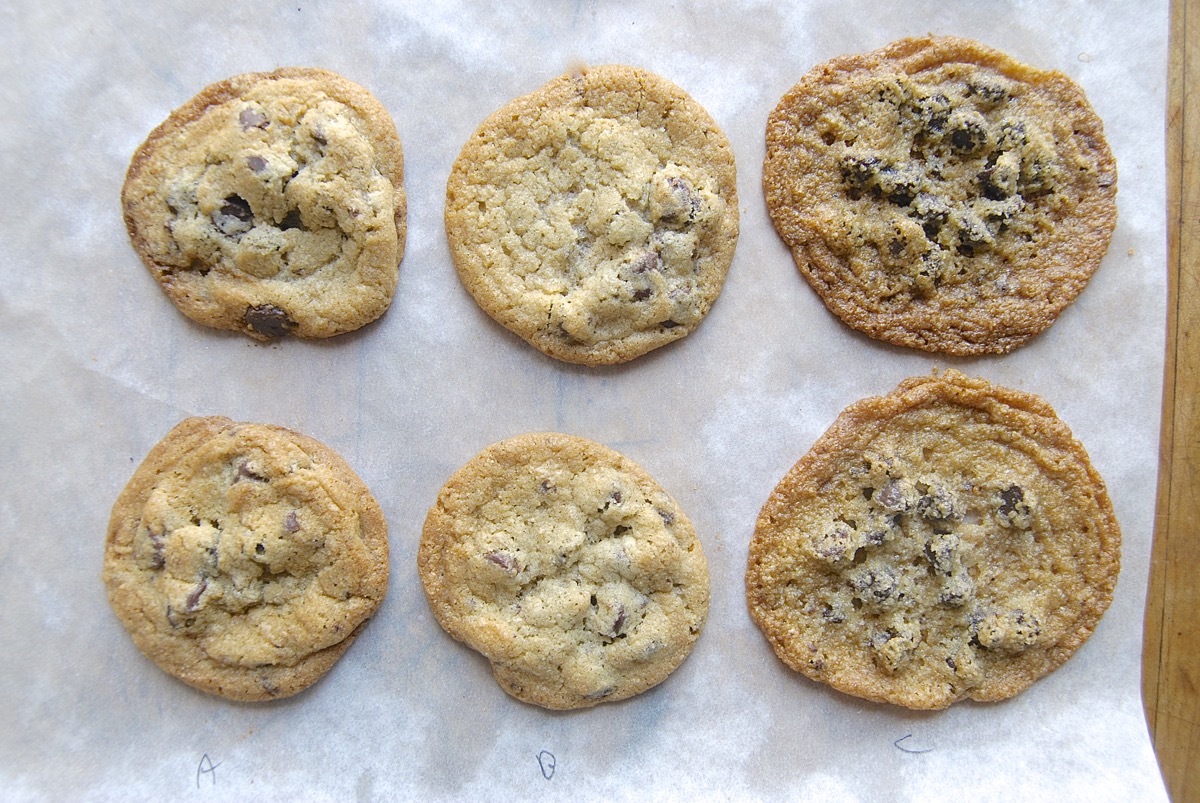
At left, the standard recipe (A); in the center, the standard with a 25% almond flour substitution (B); at right, 100% almond flour chocolate chip cookies (C).
Cookie A and cookie B are very similar; cookie B is marginally less crisp, and some of the batch spread a bit more. But I'd enjoy either one without hesitation.
Cookie C, the 100% almond flour cookie, spreads like cold butter on a hot skillet, yielding cookies a mere 1/8" thick. With chocolate chips swimming in a "puddle" of cookie, these aren't the most attractive treat — and they're very fragile. But flavor? Delicious!
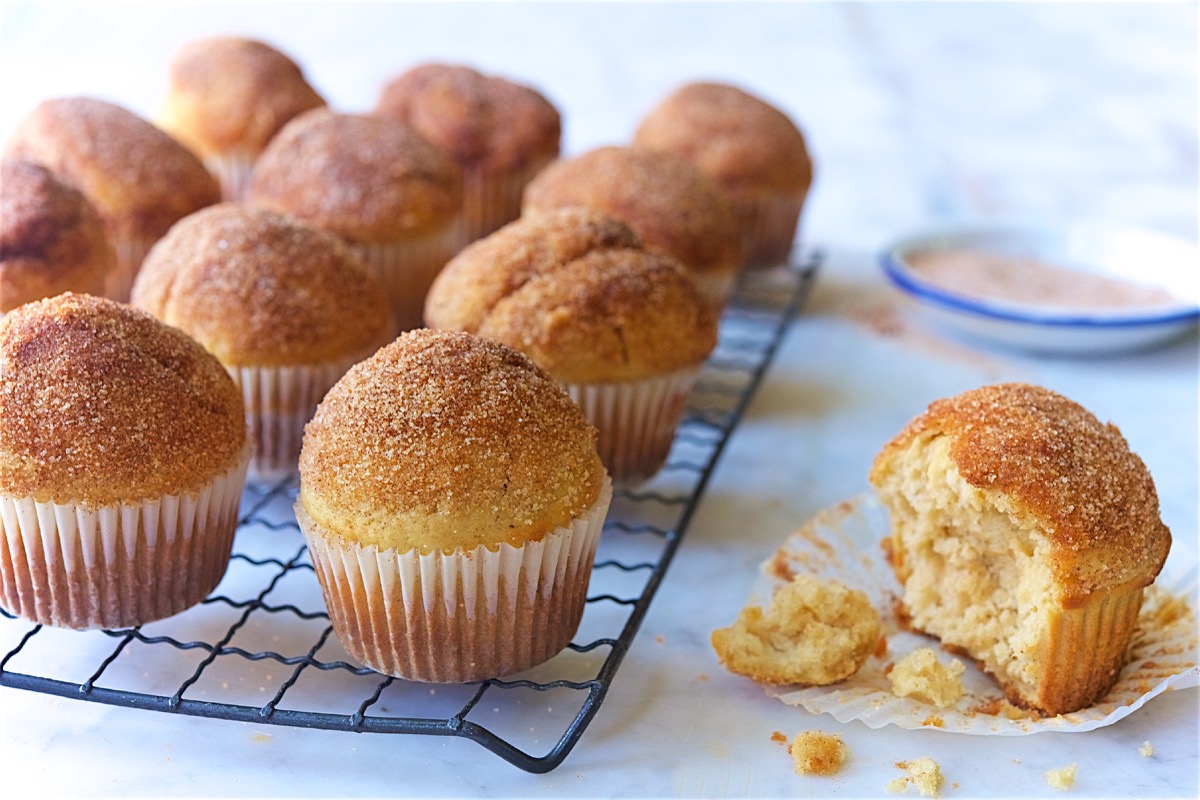
I've loved these tender, high-rising muffins since forever. With their strong nutmeg/cinnamon flavor, they taste like nothing so much as a hot-from-the-fryer cake doughnut.
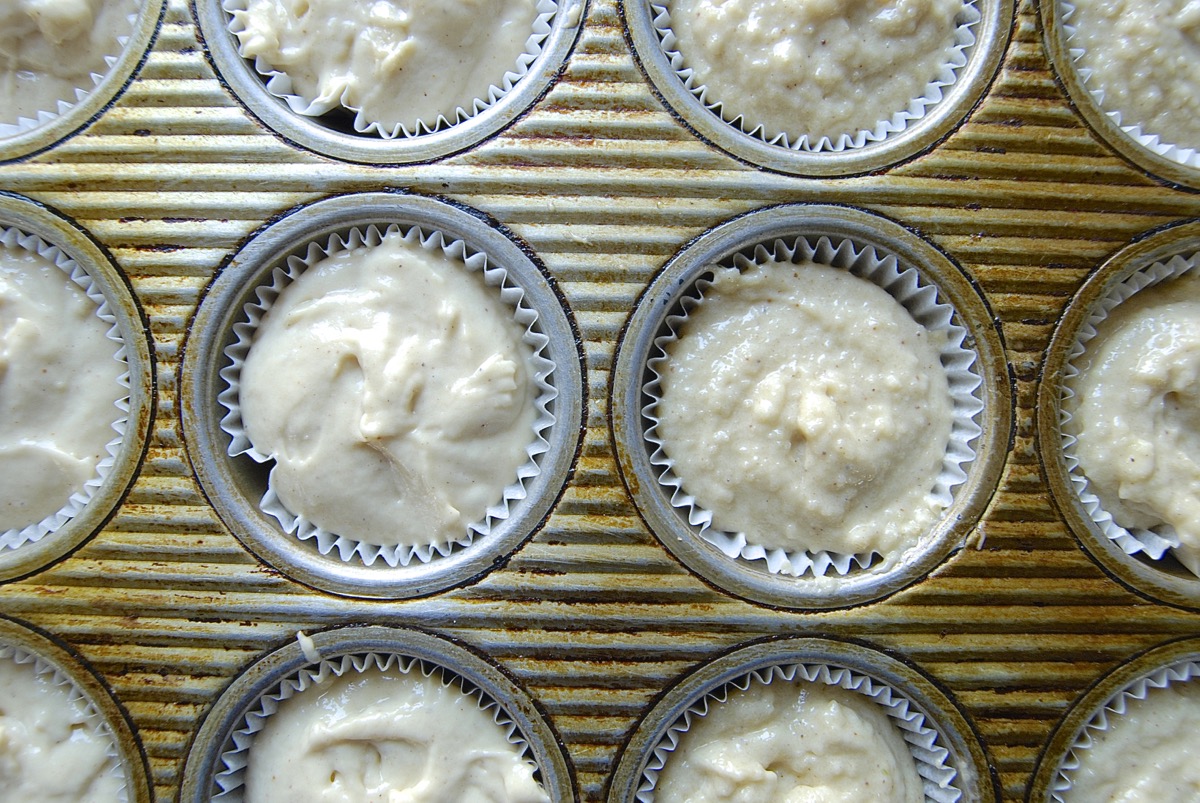
The almond flour version, at right, shows the graininess of ground nuts in a somewhat darker-colored batter.
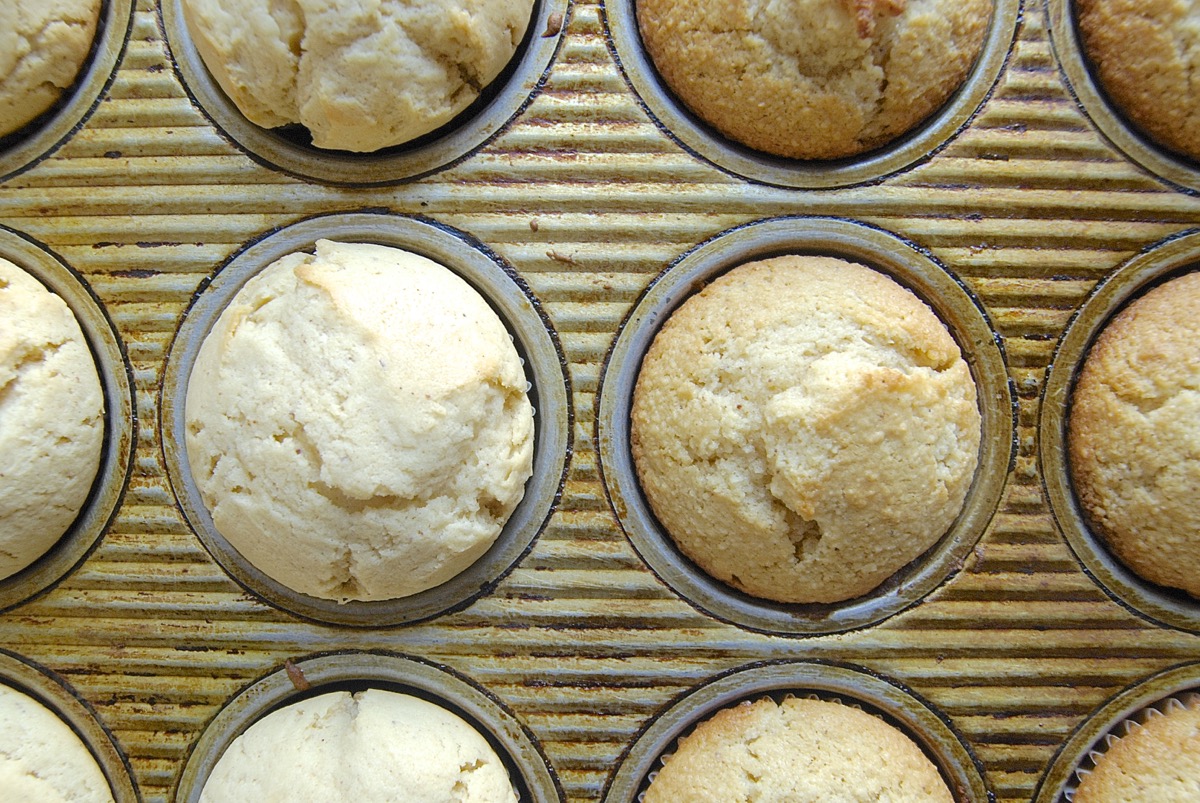
Once baked, the almond flour muffins definitely show more browning, the result of their extra fat from the almonds.
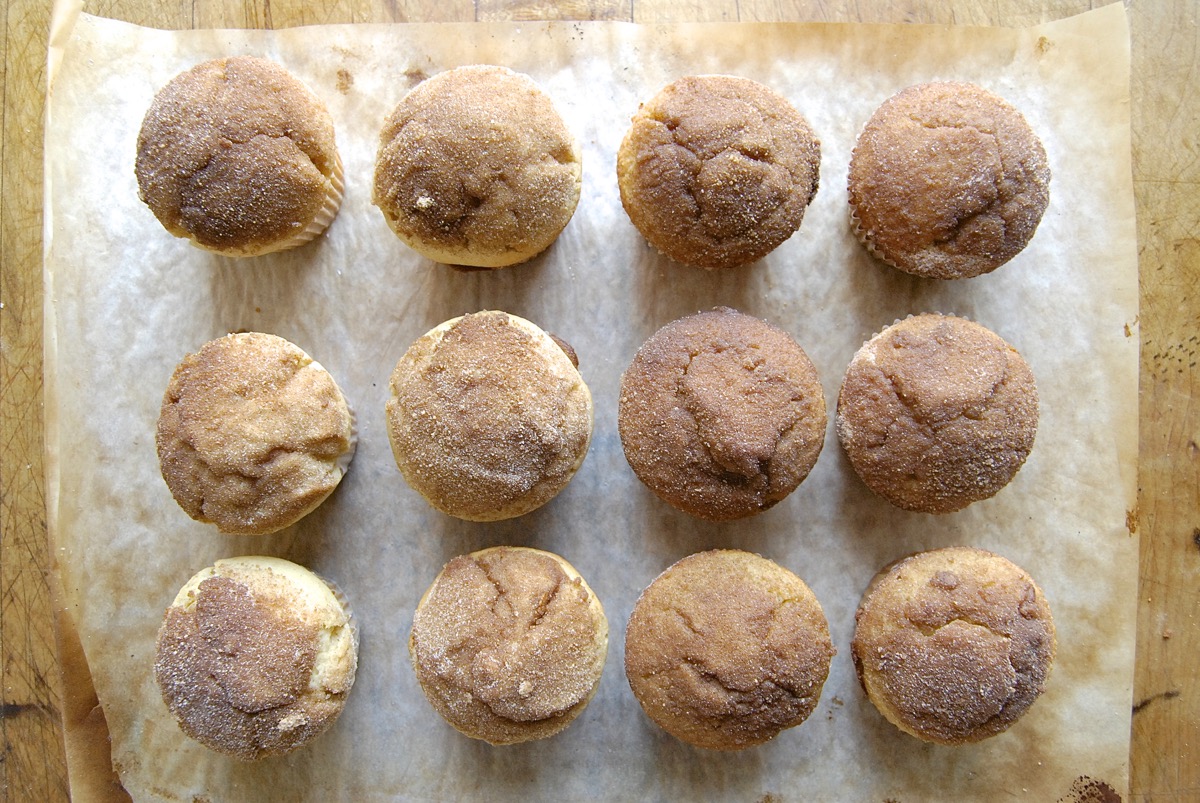
Equally tender right out of the oven, the 25% almond flour muffins have greater staying power: they remain soft and moist after 3 days, while the standard muffins start to dry out.
The almond flour muffins also have slightly richer flavor — one tester said they tasted "buttery."
I'm starting to see a trend here that will continue through several other recipes: a muffin made with almond flour doesn't rise as high as its all-purpose flour counterpart.
Which makes sense: Gluten is the protein-based structural element in all-purpose flour that allows baked goods to rise. Replacing all-purpose with almond flour eliminates some of this structure.
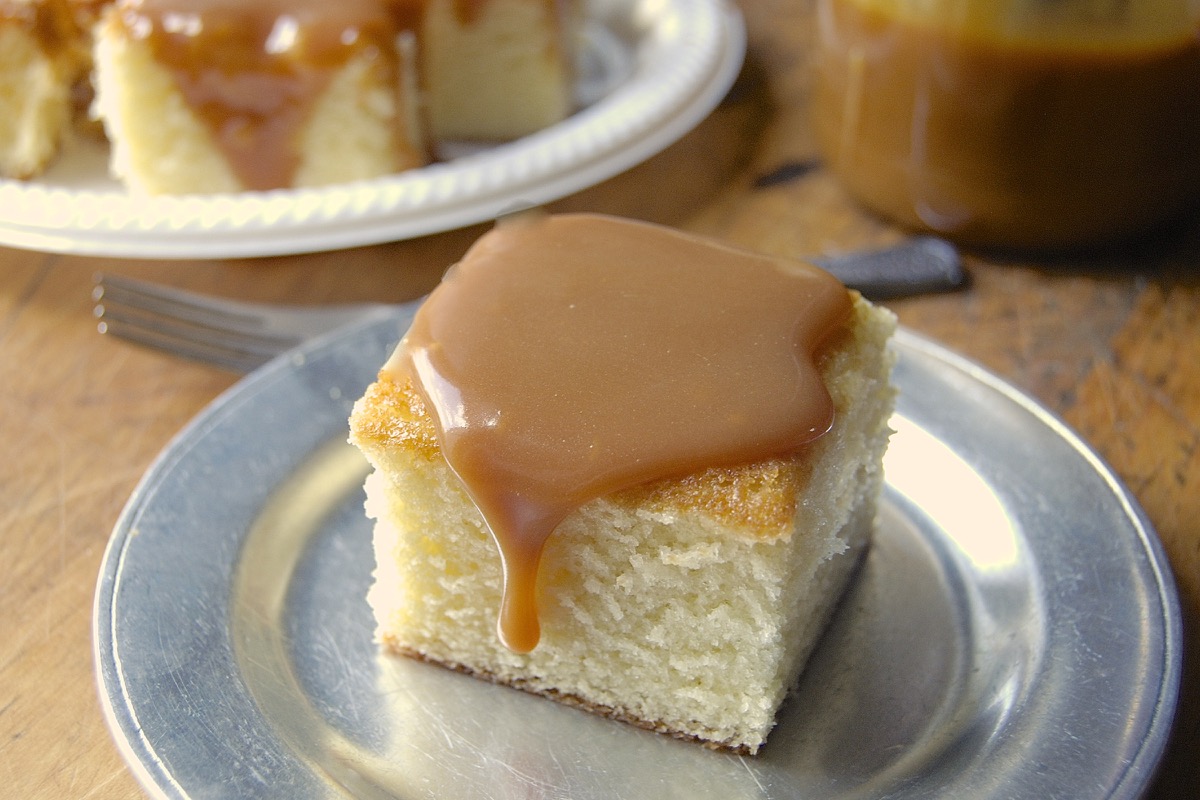
Best yellow cake of all time? My vote goes to hot milk cake, an old-fashioned, butter-rich cake with medium-fine grain, superior moistness, and wonderful flavor. Our version comes courtesy of Chef Zeb Stevenson of Atlanta's Watershed on Peachtree restaurant.
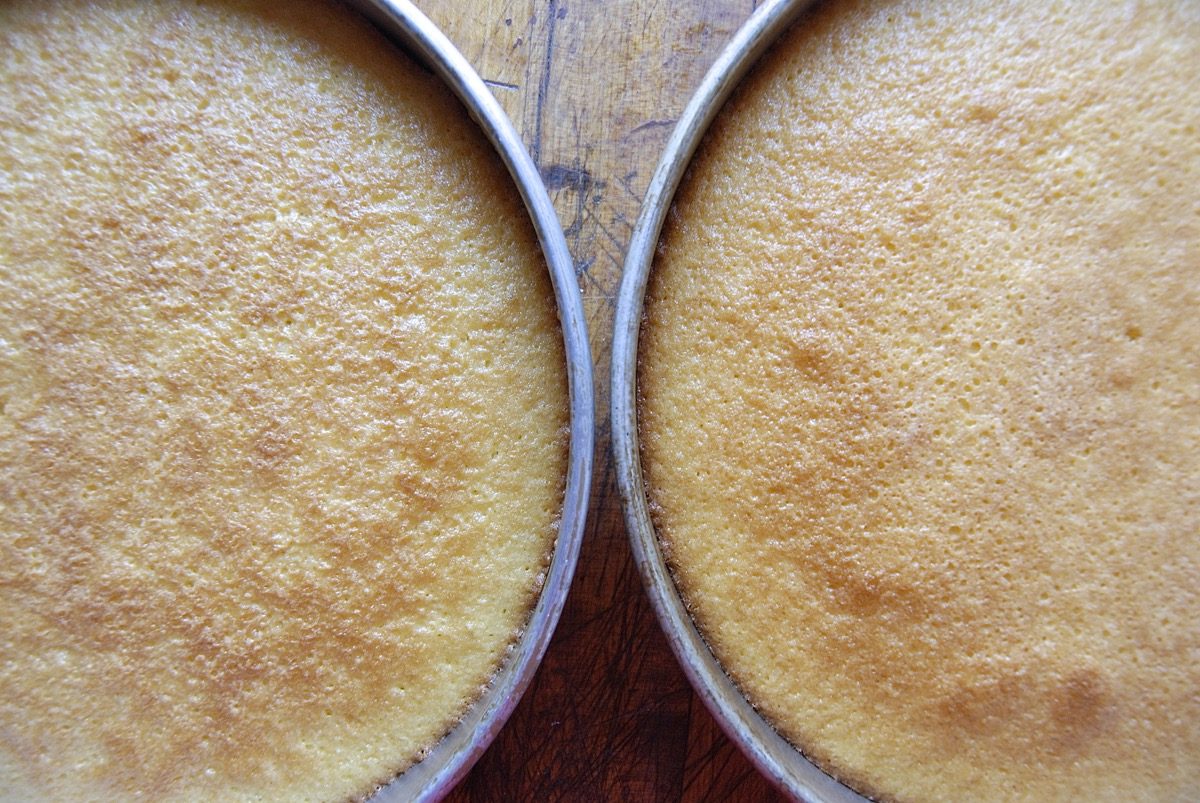
I wonder, will the 25% almond flour cake brown more than the all-purpose flour cake?
Perhaps very, very slightly (that's the almond flour cake at right), but not significantly.
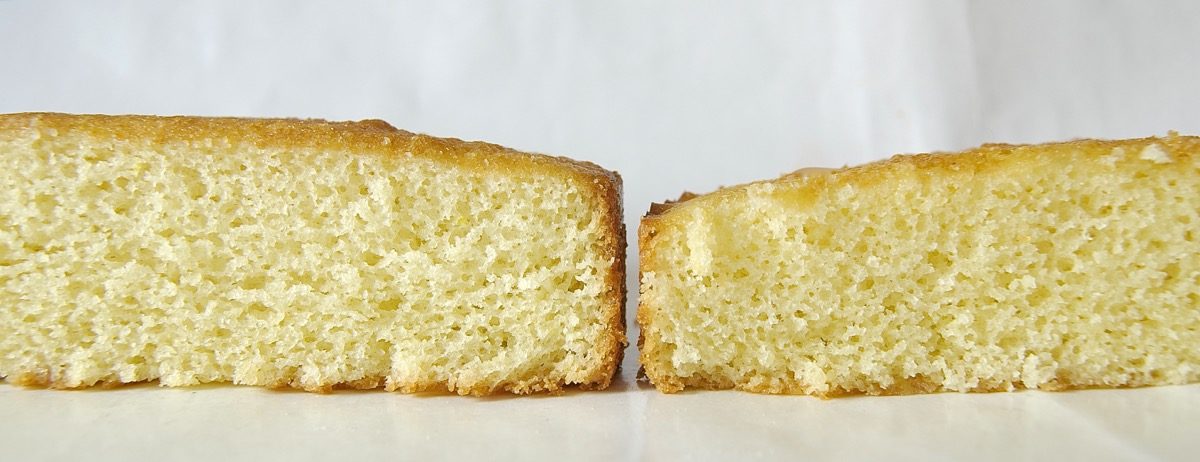
Like the Doughnut Muffins, the 25% almond flour cake is slightly more moist and a bit more tender than the standard cake. Where a fork slides through the almond flour cake like a hot knife through butter, the standard cake shows just the tiniest bit of springy resistance.
As you can see, the almond flour cake also rises slightly less — continuing the trend started with the Doughnut Muffins.
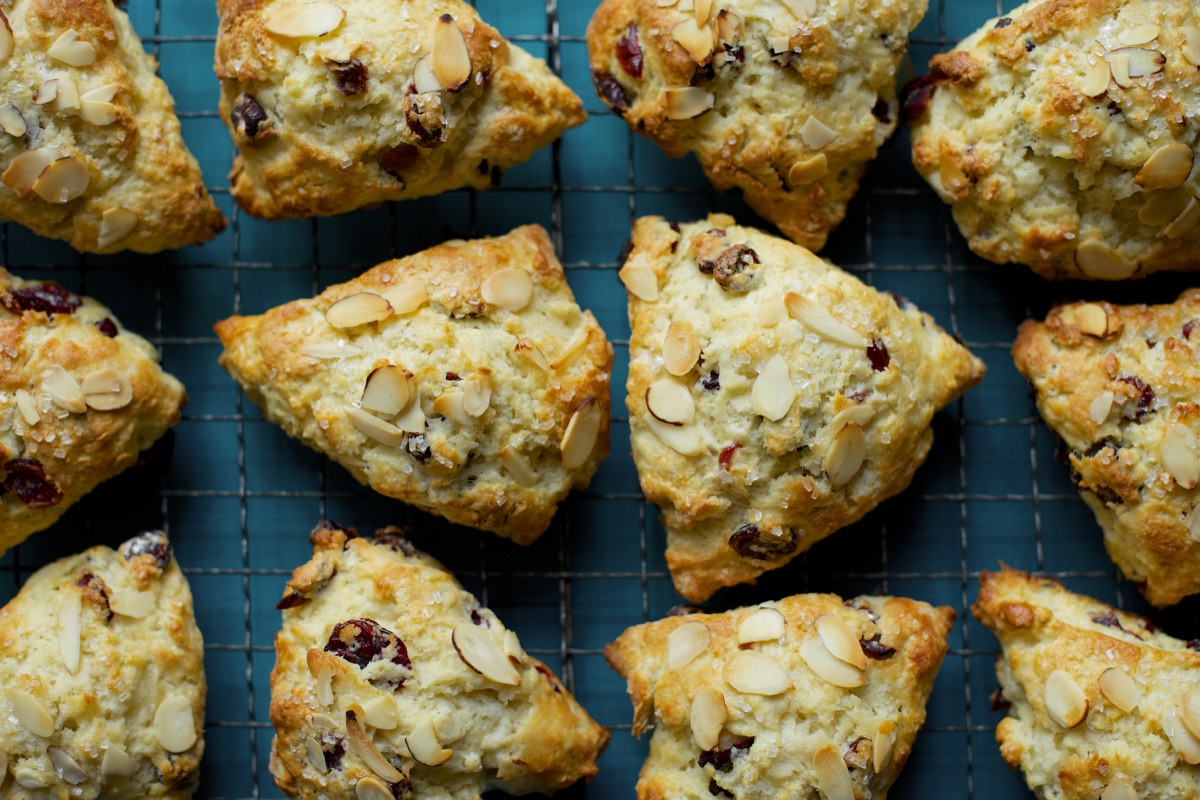
Great Britain's classic teatime treat has transitioned to America with all kinds of fanciful mix-ins, from dried cranberries and diced apricots to toasted pecans and chocolate chips. And let's not forget the sugar or glaze on top!
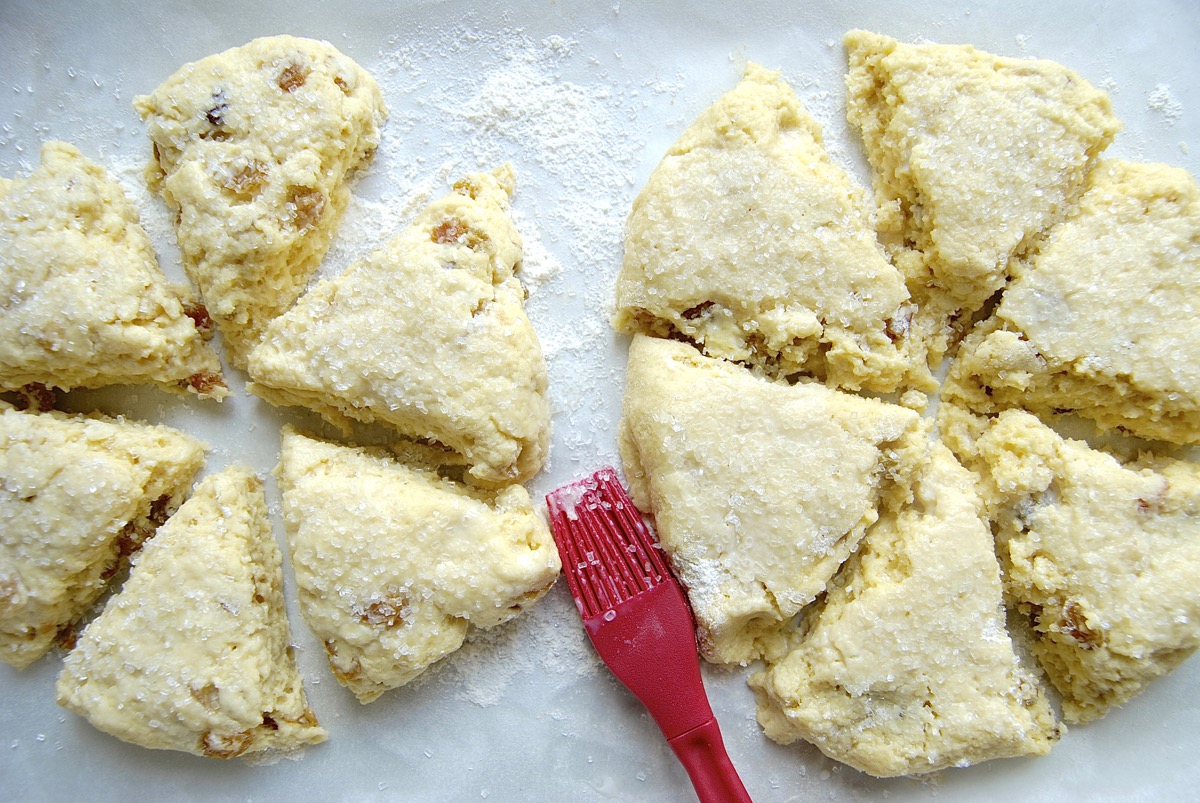
Scone dough made with 25% almond flour (right) is noticeably softer than standard scone dough. While shapeable, it's sticky and very soft.
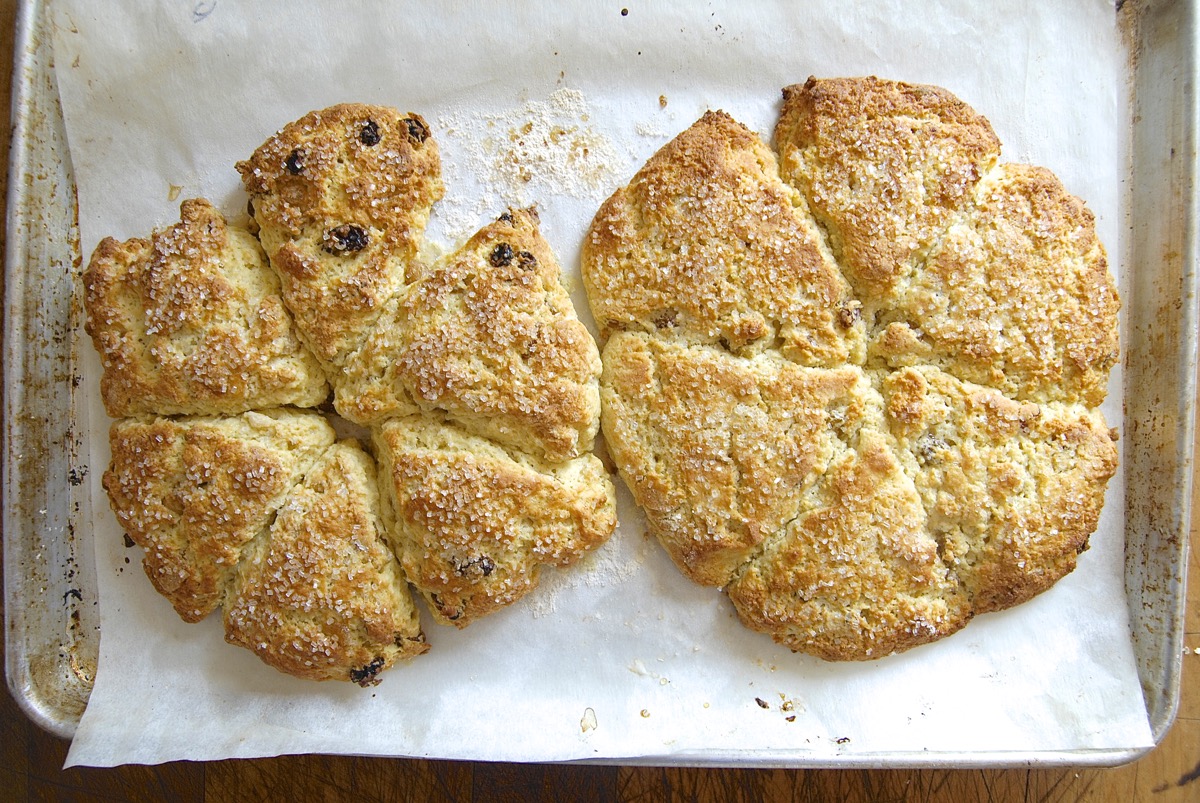
Almond-flour scones are, not surprisingly, all of the following:
• More tender
• More richly flavored
• Lower-rising
I find the almond flour scones almost too tender and moist; a traditional scone is somewhat dry and a bit crumbly, perfect with clotted cream or butter. Adding a topping to these rich almond flour scones feels like overkill.
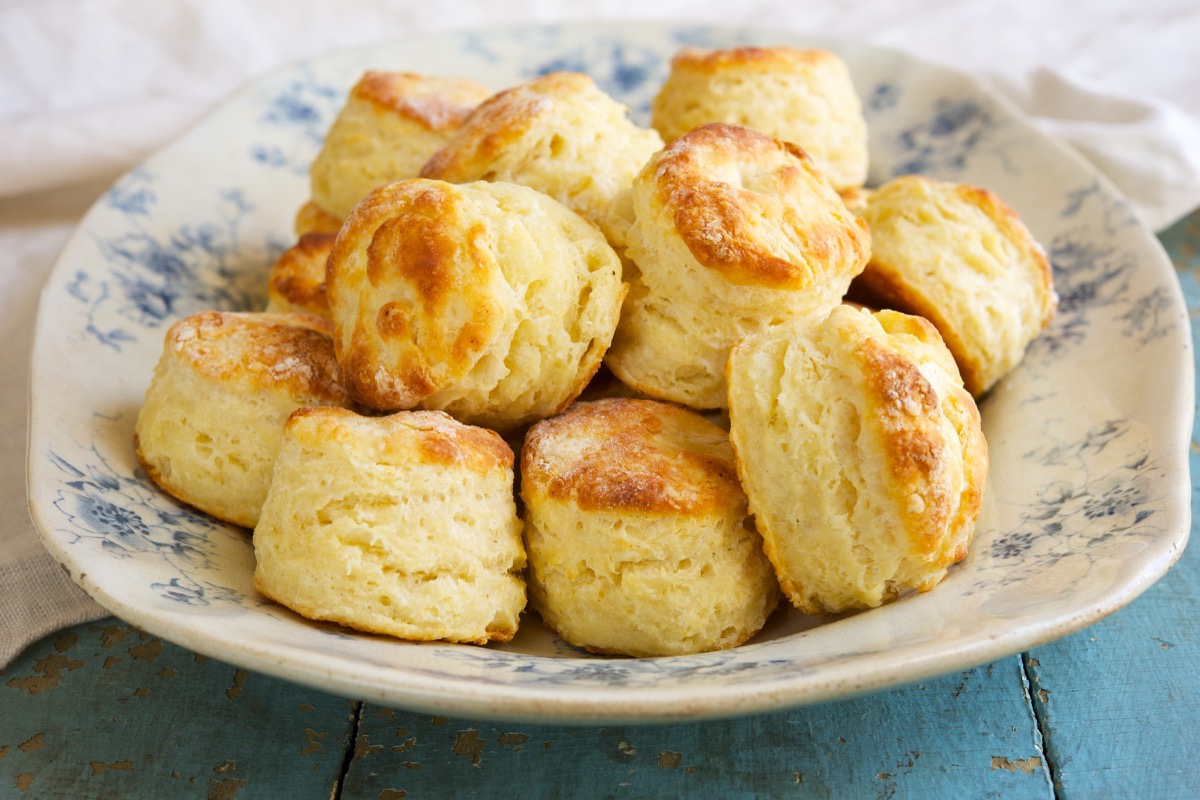
Biscuits: a point of pride for Southern bakers, baking a tender biscuit can prove quite a challenge for many of us. This particular biscuit recipe produces reliably tender, high-rising biscuits — even for us biscuit beginners!
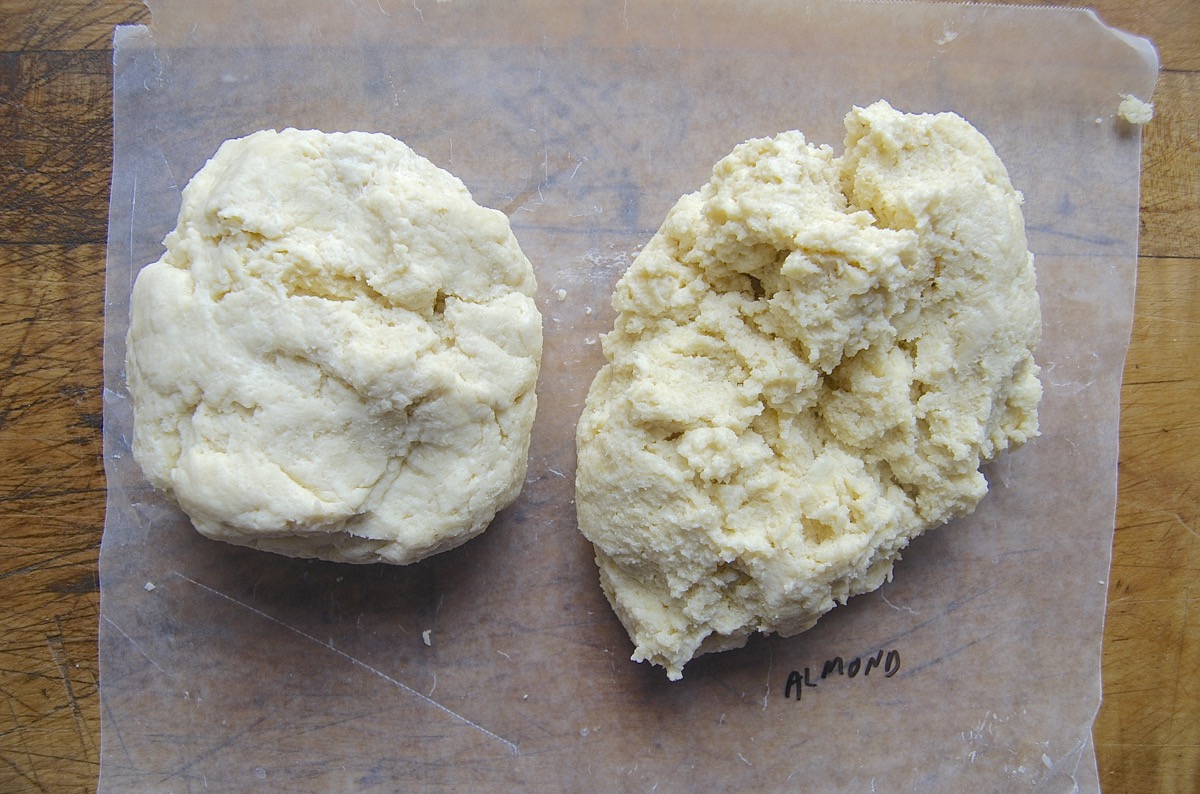
Biscuit dough made with 100% all-purpose flour (left) is the texture of mildly firm clay: it's easy to handle, and molds nicely.
Biscuit dough made with 25% almond flour is noticeably softer and stickier.
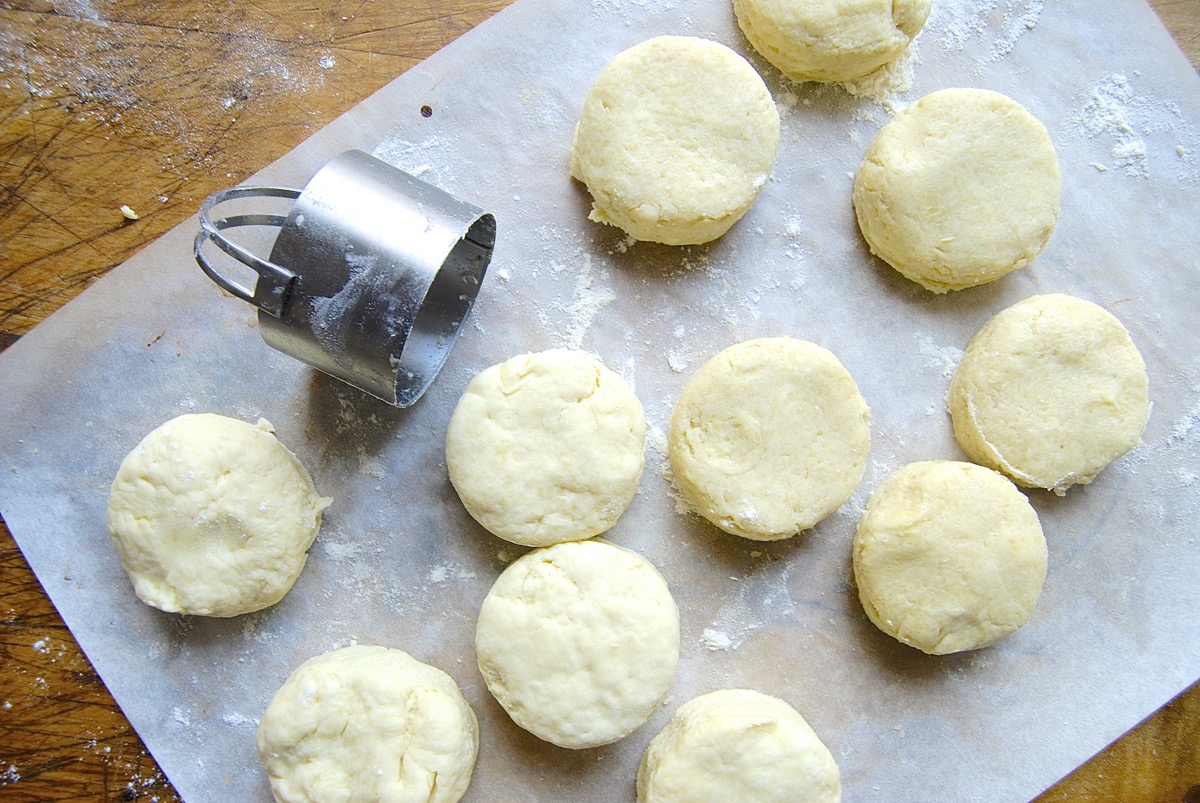
While both doughs are easy to pat into a round, the almond flour biscuits require dipping the cutter in flour before each cut, to avoid sticking.
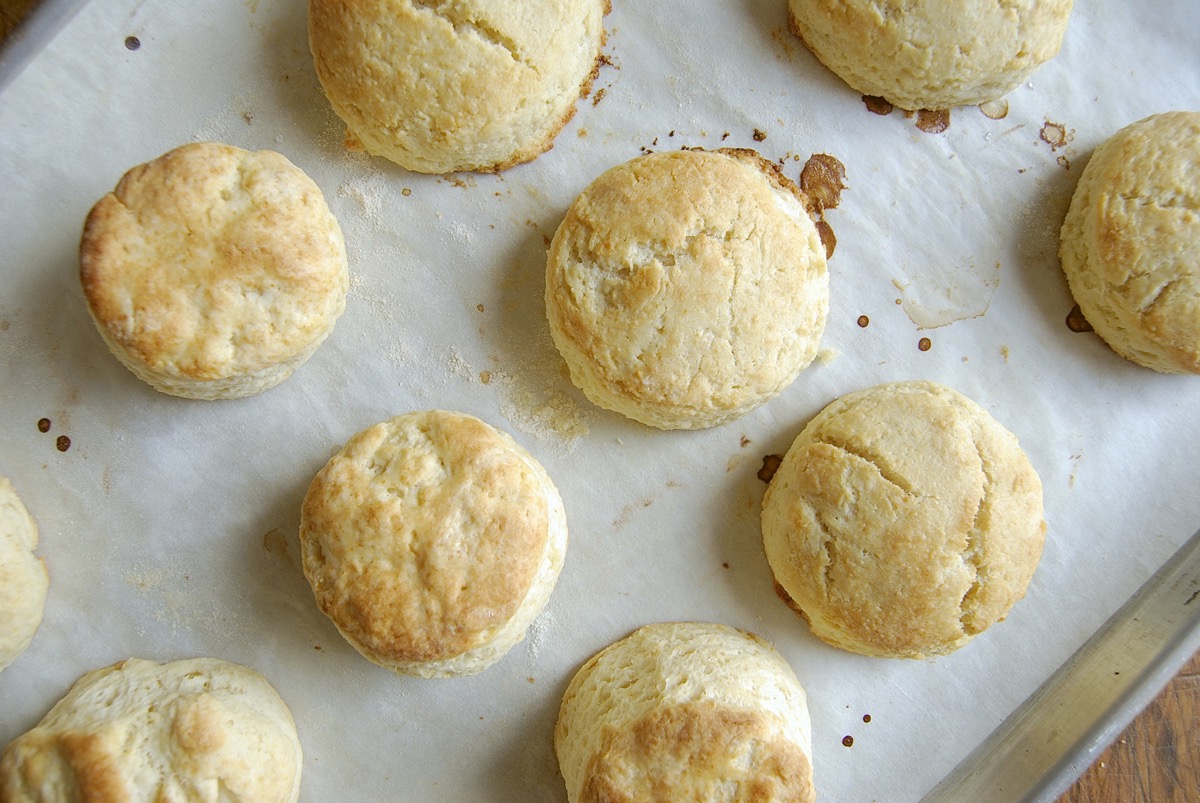
Reversing a previous trend, almond flour biscuits (on the right) don't bake up any browner than standard biscuits. This is most likely because both versions are already high in fat, minimizing the effect almond flour's extra fat has on browning.
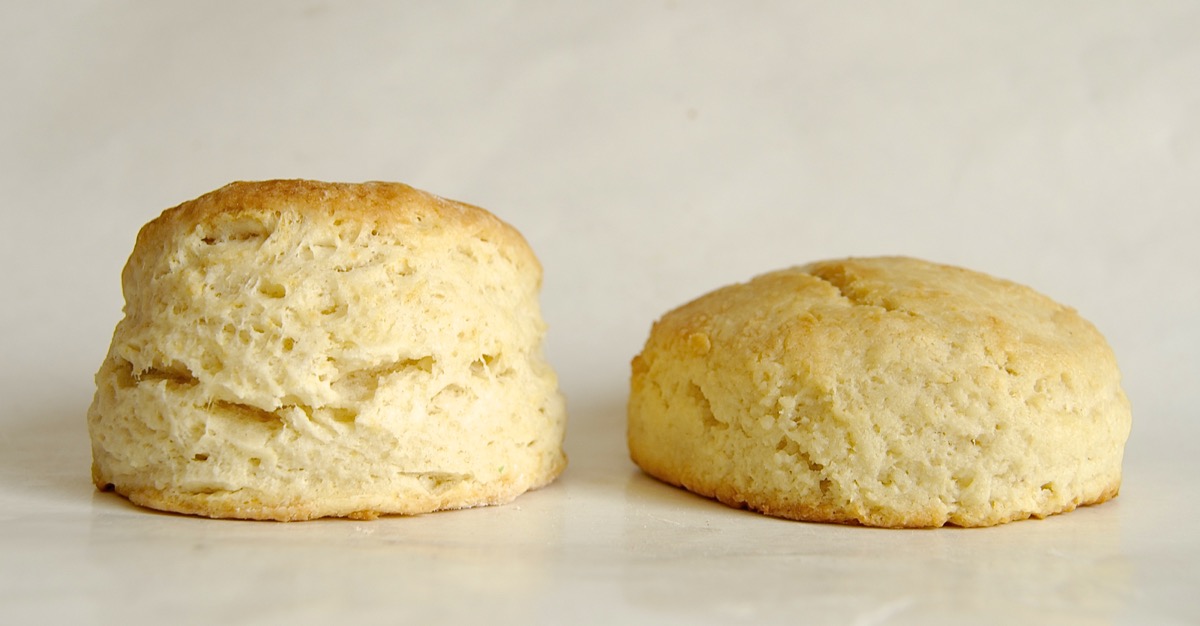
Almond flour biscuits do, however, spread more/rise less.
Light-bulb moment: almond flour biscuits, with their greater surface area/lower rise, would make delightful shortcakes.
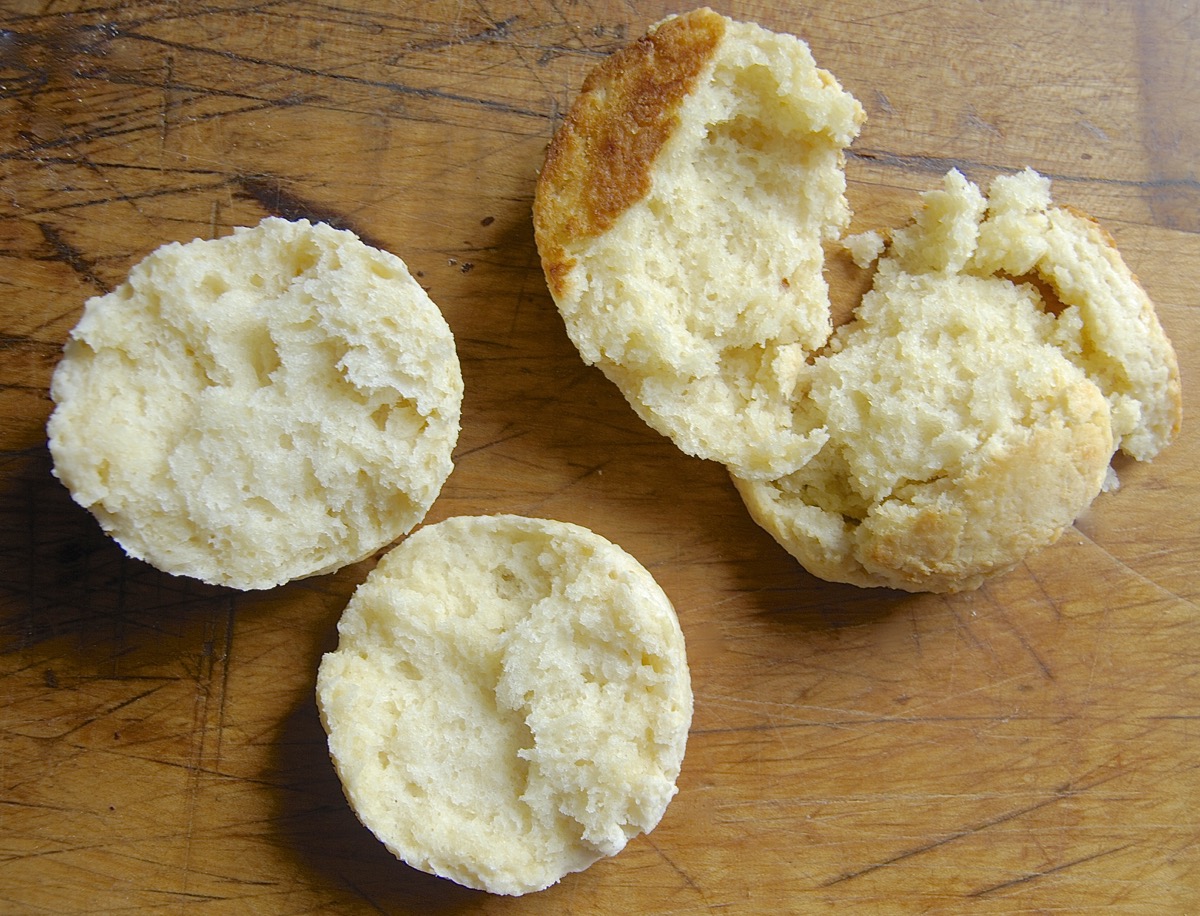
Almond flour's rich flavor is even more apparent in a plain baked good like biscuits: almond flour biscuits (above, right) have a touch of sweetness and rich nuttiness that standard biscuits don't exhibit.
Standard biscuits, though, are more sturdy, and thus more suited to sandwiches or sliders. The standard biscuit (above, left) easily breaks into two halves around the equator; while trying to break an almond flour biscuit in half results in some major crumbling. If you're making shortcake from almond-flour biscuits, you'll want to cut (rather than break) them apart.
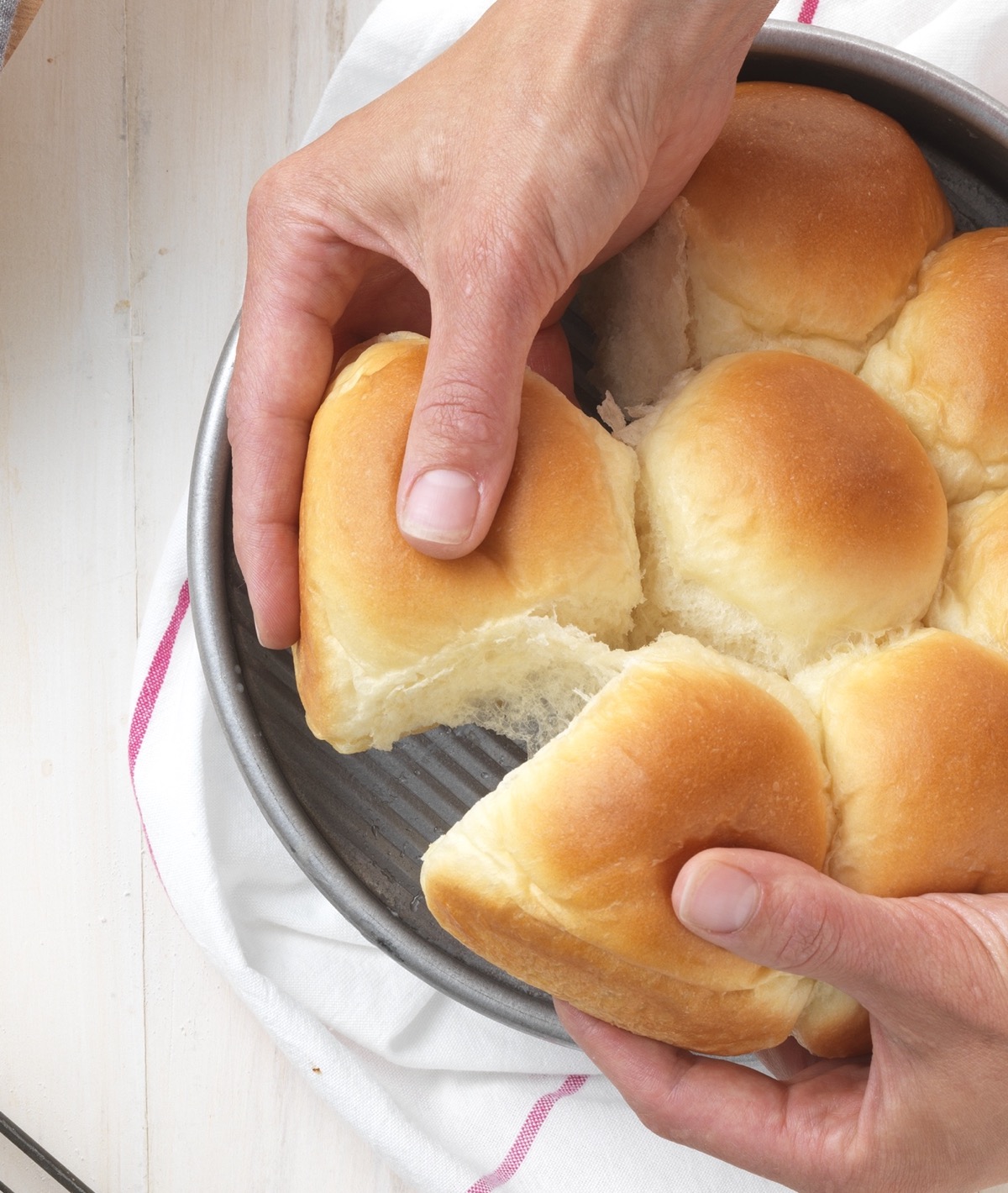
Everyone has a favorite soft dinner roll recipe; this is mine. In this era of trendy artisan breads, "squishy white rolls" definitely still have their place at my table.
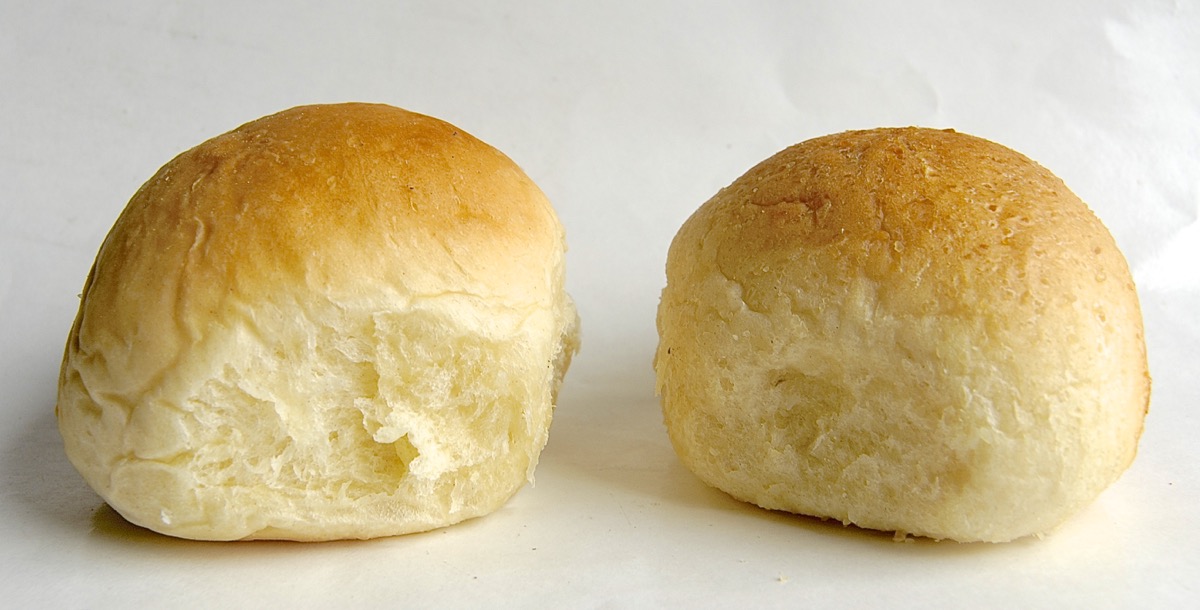
Since this is a yeast recipe, the rules have changed: instead of substituting almond flour for all-purpose (and negatively affecting rise), I'm going to add 1/3 cup almond flour for each cup of all-purpose flour in the recipe.
The recipe calls for 3 1/2 cups of AP flour, so I add 1 cup + 2 1/2 tablespoons almond flour, in addition to the AP.
Upon completion, the rolls including almond flour have a slightly speckled appearance. Their rise is about equal, but they're a bit more tender, with somewhat extended shelf life.
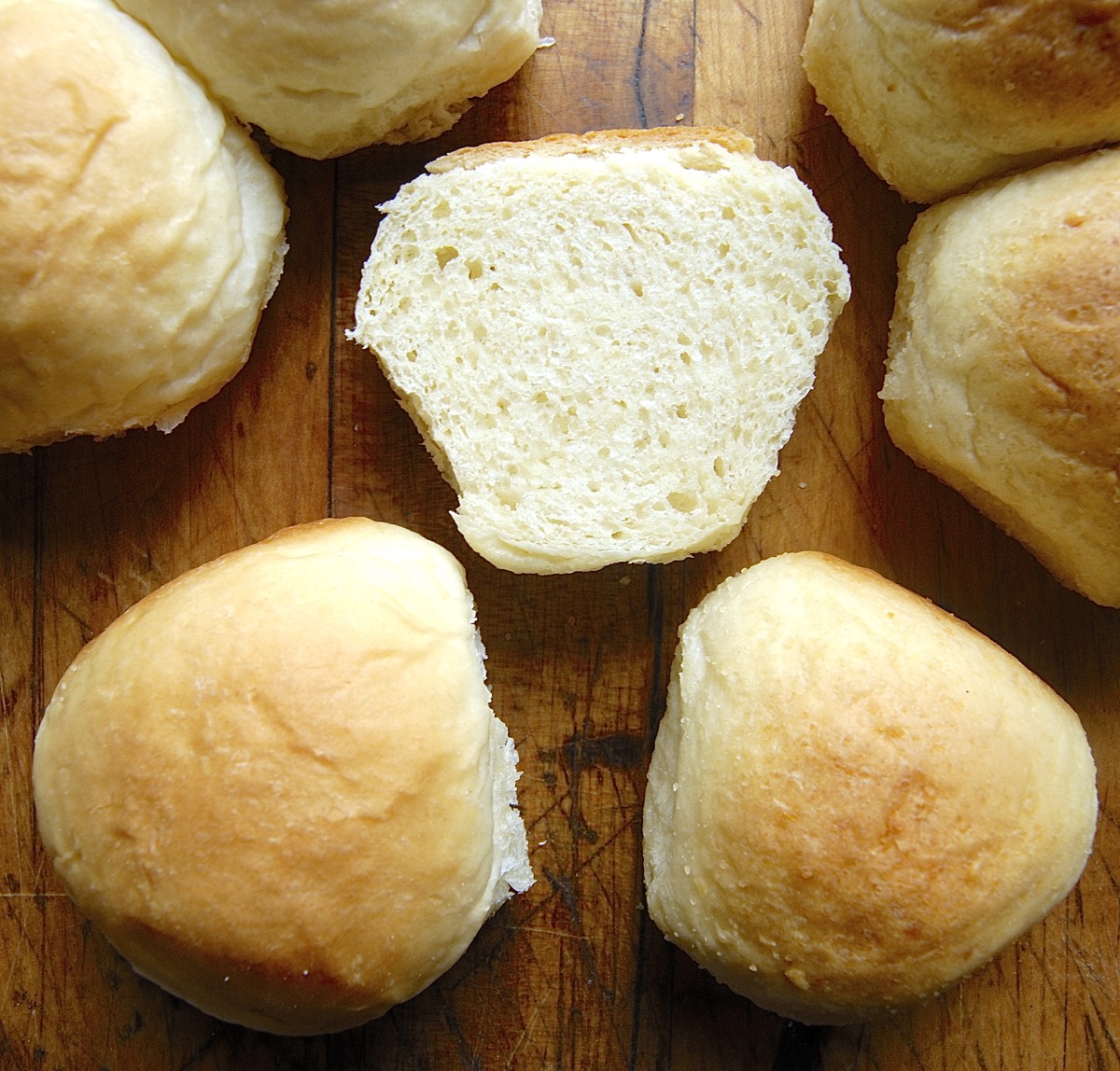
Soft, tender, moist... check, check, check. Both versions of this recipe produce a successful roll, with the almond flour roll (cut open, in the center) marginally more tender, with more nuanced flavor.
Again, almond flour extends shelf life; after a couple of days in the bread box, the almond flour rolls remain a bit moister.
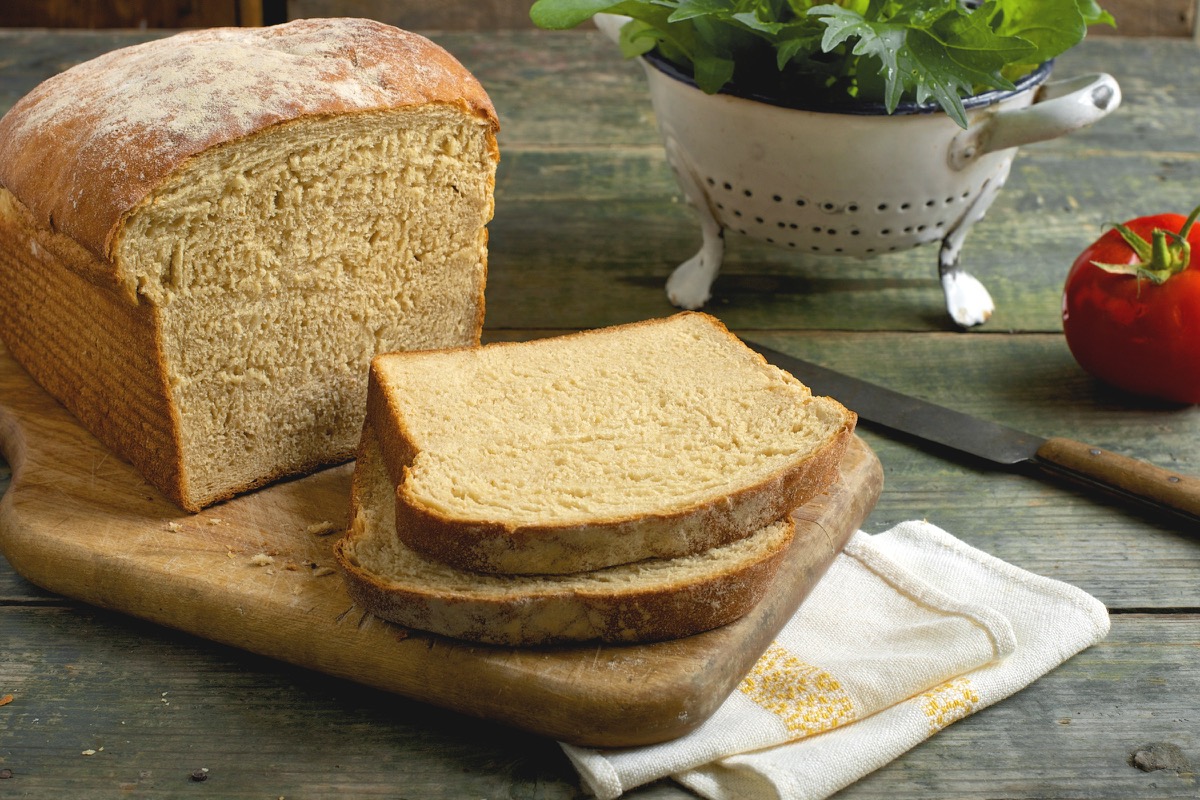
Many bakers' first foray into whole wheat baking is 100% whole wheat sandwich bread — arguably one of the most challenging tests to which you can put a whole grain! This recipe, however, produces a fine-textured, fairly moist loaf with good flavor — and without a lot of effort.
I'm wondering what the addition of almond flour to a whole wheat recipe will do. Whole wheat flour, which includes oily wheat germ, is already fairly high-fat; will the fat in almond flour push this loaf over the top?
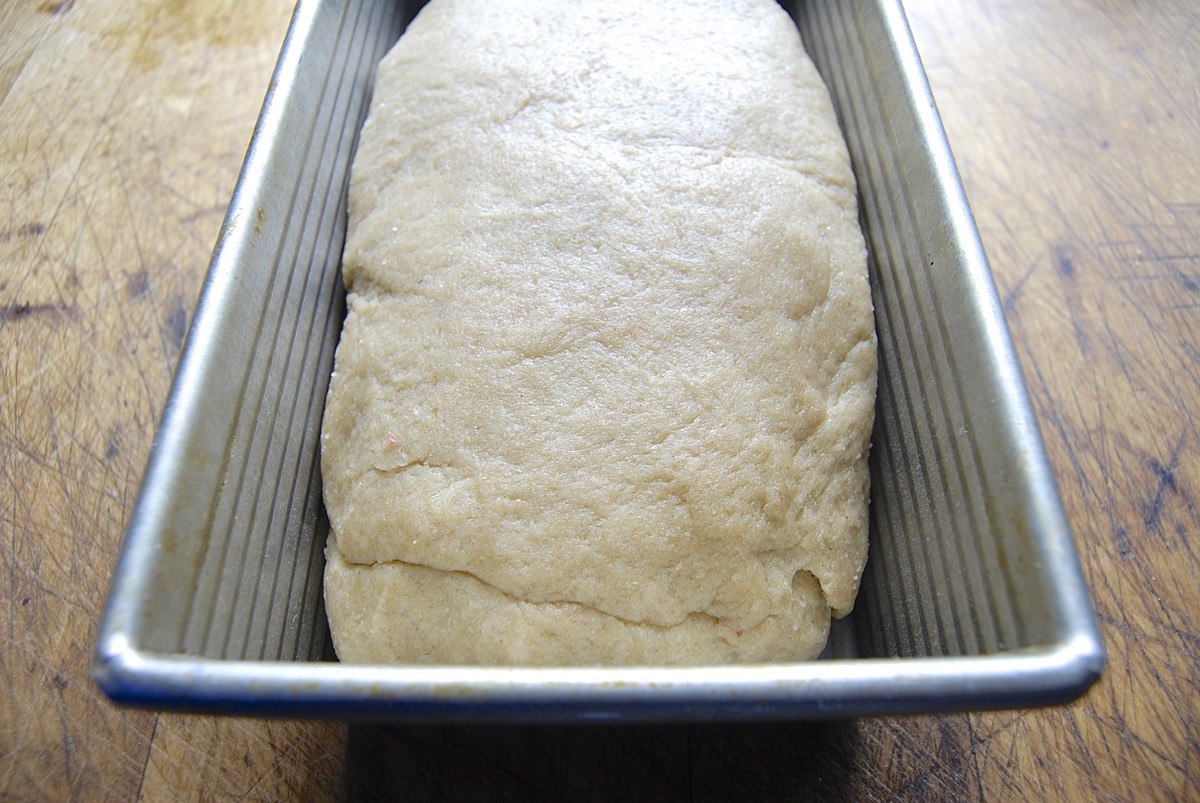
My almond flour loaf definitely starts with an odd-textured dough. It's somewhat clay-like, not exhibiting the elasticity of dough made completely from whole wheat flour. See the rather lumpy texture of the shaped almond flour loaf?
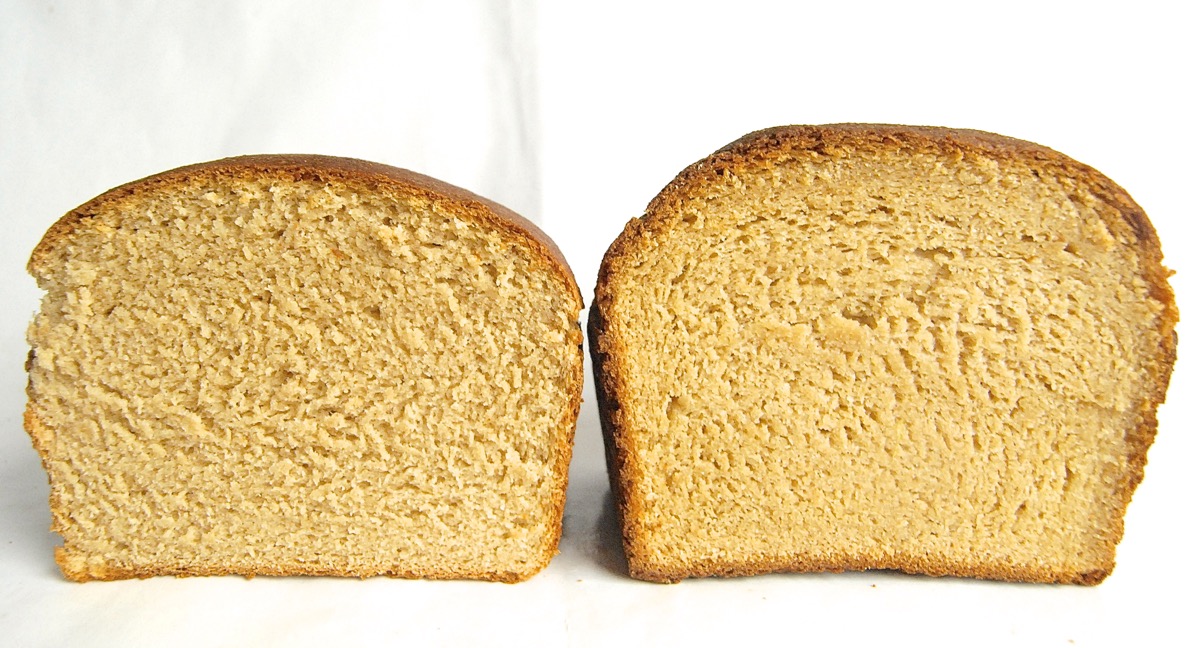
Despite its "obstinate" feel, the loaf made with almond flour rises noticeably higher than the standard loaf. Does the extra fat "grease" the gluten (or increase moisture), loosening up the dough and allowing it to rise more easily? I'll have to do more research on this.
The texture of the almond flour bread is more tender and cake-like, compared to the slightly chewy whole wheat loaf. In addition, the loaf with almond flour is a touch sweeter.
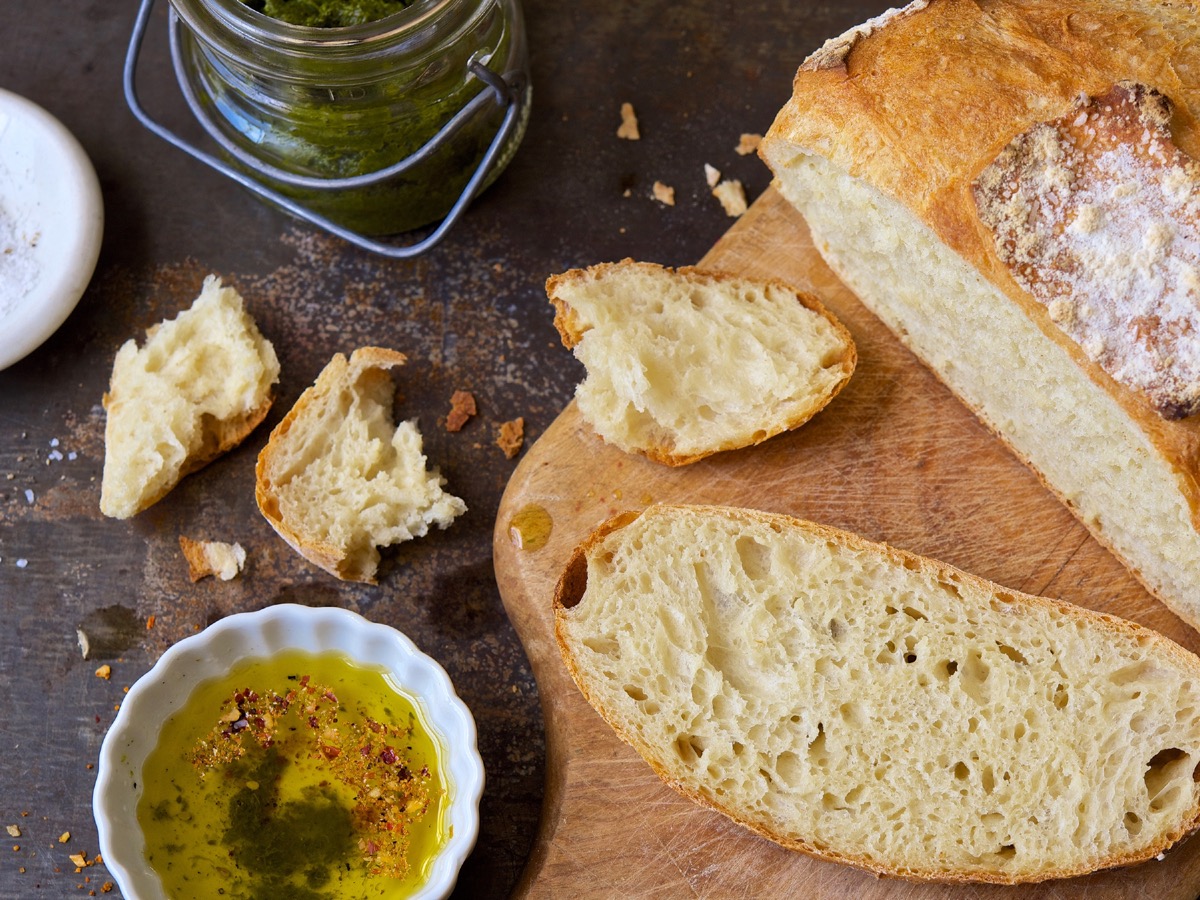
Our 2016 Recipe of the Year is the beginner's way to crusty artisan bread. With no kneading required — a rest in the fridge develops the dough just fine — this is the easiest introduction to yeast bread you'll ever enjoy.
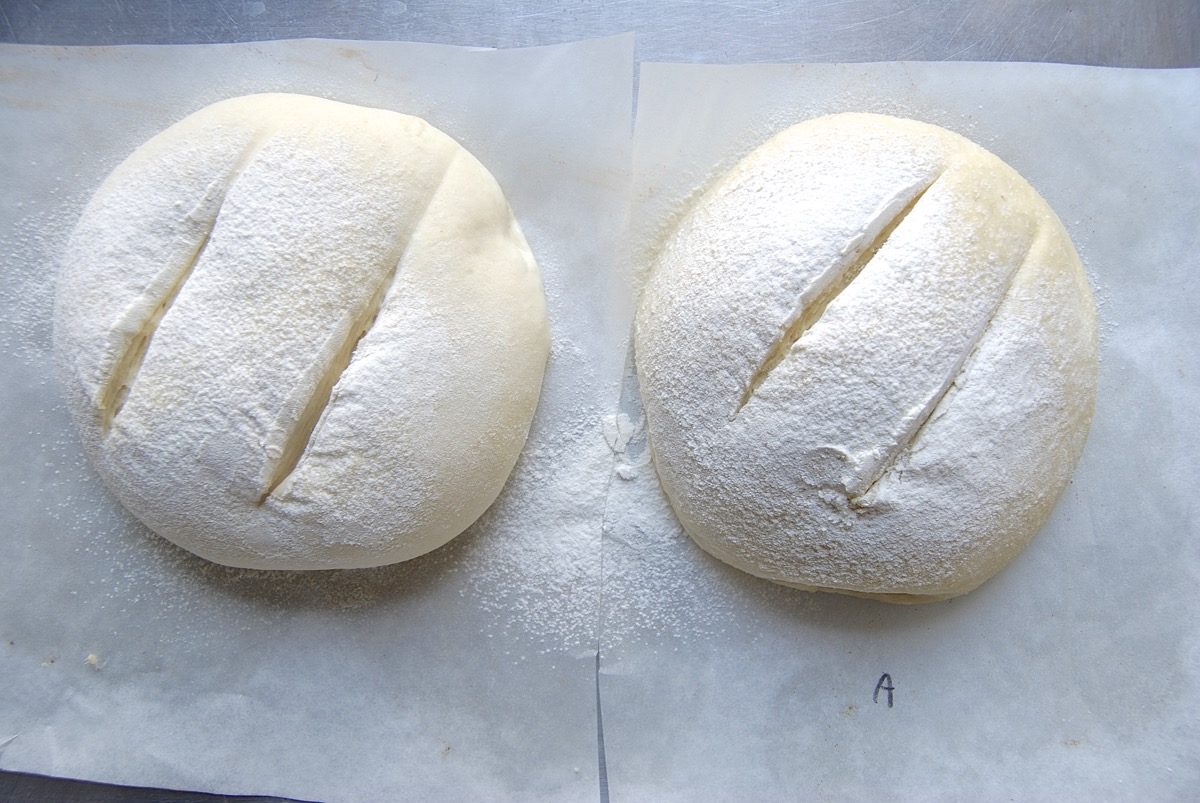
A = almond: and though you can't see it, my almond flour loaf has risen higher than the loaf made with all-purpose flour. Both loaves are ready to pop into the oven.
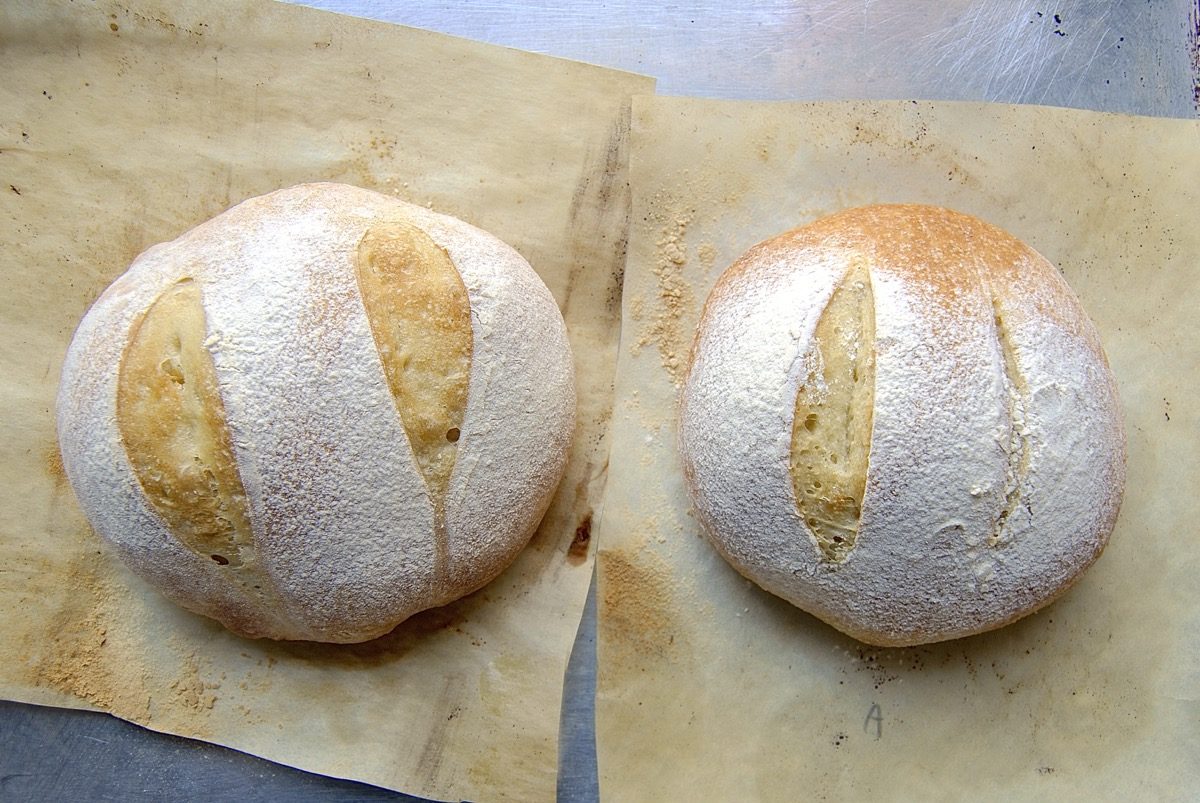
Check out the slashes: once baked, the almond flour loaf (right) has expanded just slightly less than the loaf made with all-purpose flour.

You can see the added expansion of the standard loaf (left), as evidenced in its more open crumb. What you can't see is its chewiness: the standard loaf has some real bite. The almond flour loaf is more tender, breaking apart in your mouth without much resistance. As far as flavor, the standard loaf has more tang, more yeasty character.
In this recipe, I'd stick with the original 100% all-purpose flour version. Almond flour's chief strength (tenderness) simply isn't a good fit in this crusty/chewy bread.
In addition, the oil in the almond flour deteriorates over the course of the dough's long, cool fermentation in the fridge, lending any bread made after about the third or fourth day odd-tasting.
Let's summarize what we've learned here, shall we?
What have you learned from baking with almond flour? What are your favorite almond flour recipes? Please tell us in comments, below.